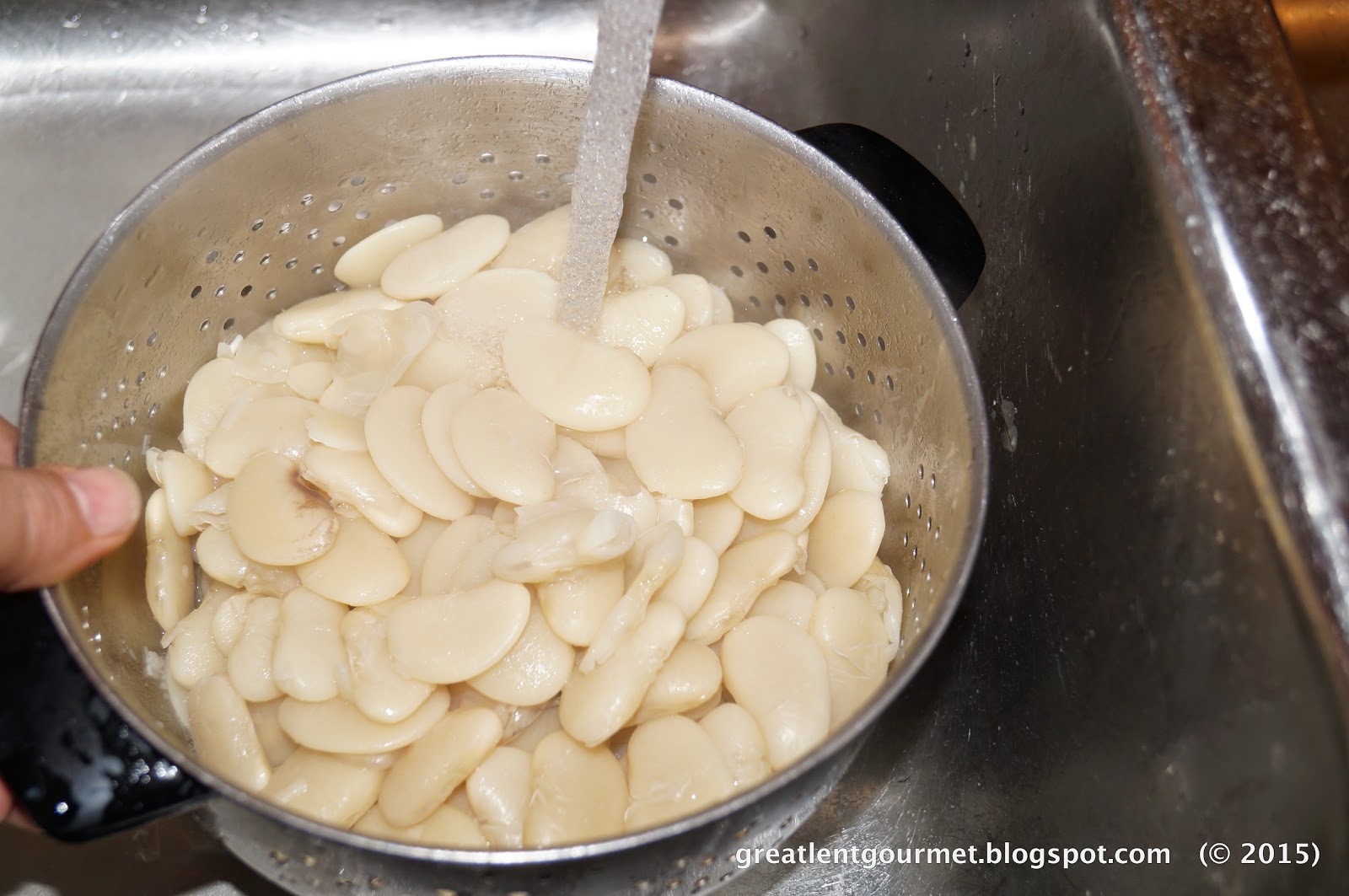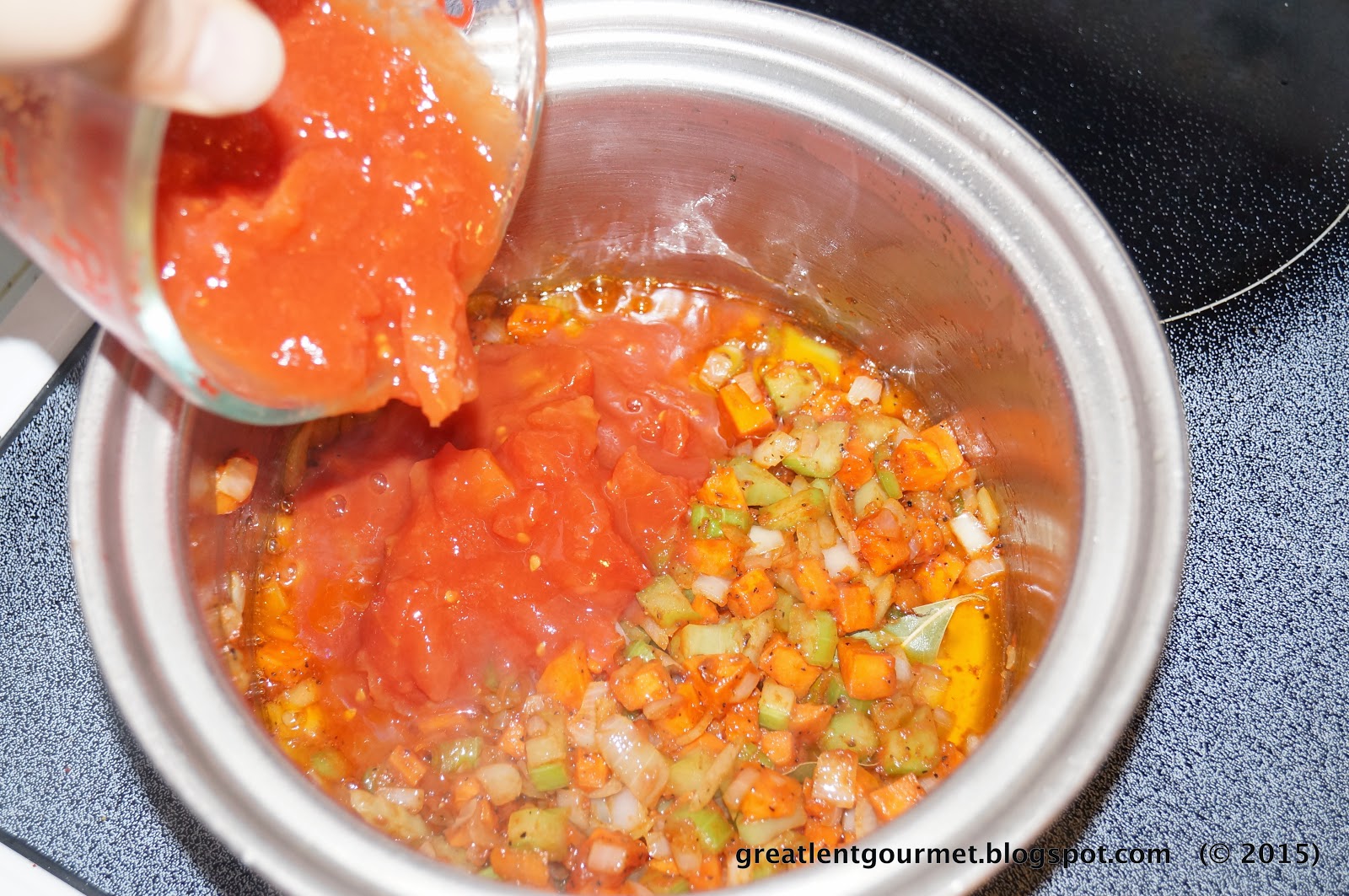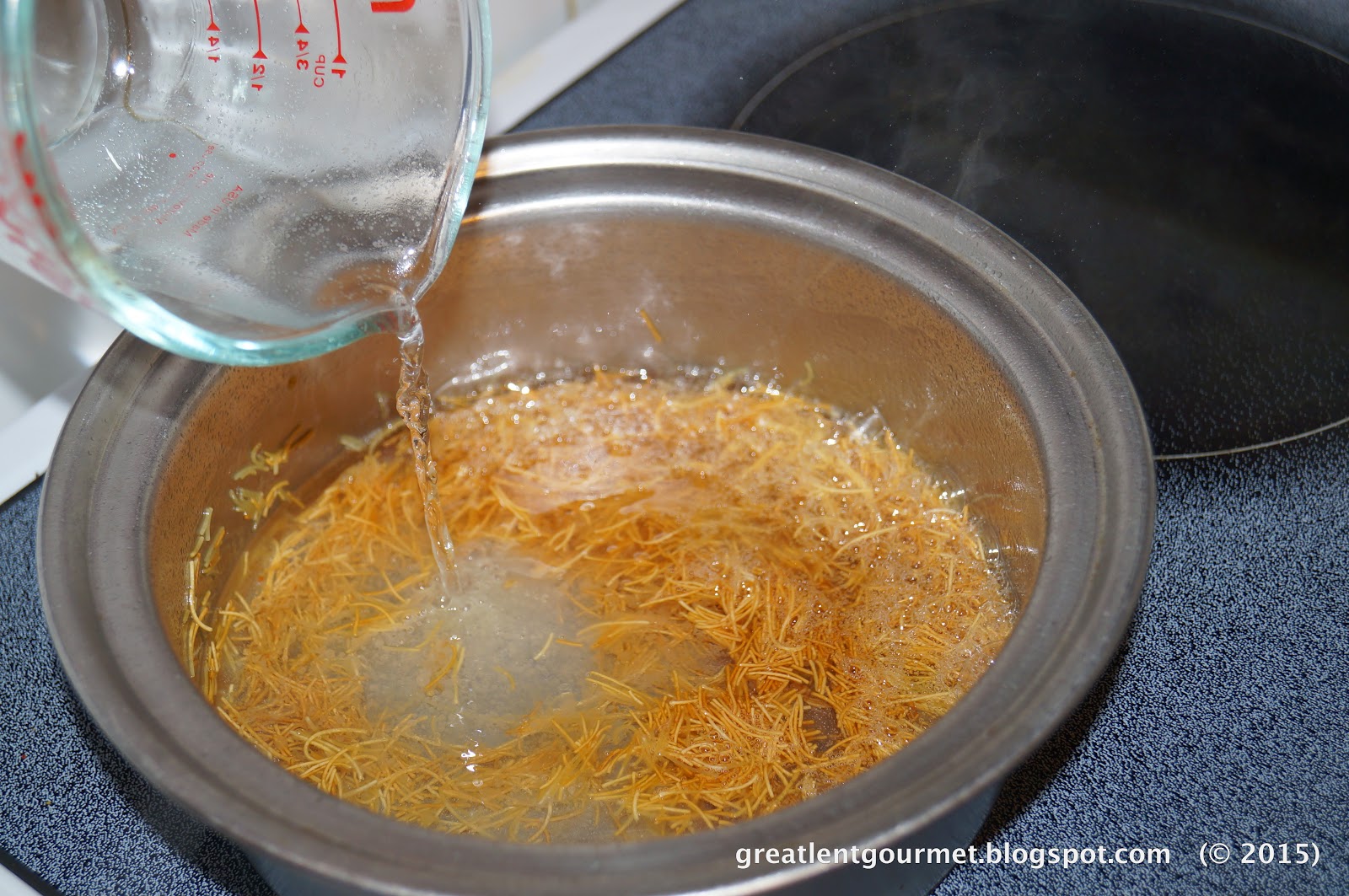Gigantes are giant lima bean; it is in the name -- gigantes means giant, which are really large. When one has such large beans, must one make a large dish from them? No, not at all. In fact, sometimes it is very nice to put on a small pot of large beans. And, when they are cooked properly, the beans become buttery and velvety in your mouth.
Generally, gigantes are made in a tomato sauce and stewed. Sometimes they are made into a salad with a light, simple dressing and maybe a few vegetables. That is what we chose to do today. Although the stewed gigantes in tomato sauce are our preferred method (see Day 32: Gigantes (Baked Giant Greek Lima Beans with Vegetables in Tomato Sauce, 2012), making salad from the beans was easy, fast, and light. It was a chance to make the beans stand out without interference in flavours from any heavy sauce. And, the buttery smoothness of the perfectly cooked bean was a delight.
For this recipe, you will need to following:
1 1/2 cups dried Giant Lima Beans, soaked overnight
1 cup oil (we used canola)
2/3 cup vinegar
1/2 cup sun dried tomatoes, sliced
1/2 cup capers, rinsed
1/2 red onion, sliced thin
1 stalk celery, peeled, sliced
1 clove garlic, chopped
1/2 carrot, grated
oregano, to taste
crushed red pepper flakes (bukovo), to taste
salt, pepper to taste
The first step when working with dried beans is to soak them overnight. Now, if you miss this step, or decide that you don't want to wait until tomorrow, then you can boil the beans in a pot until they are soft. Cooking the gigantes will take longer if they have not been soaked, about an hour, maybe a little more. Whereas if the dried beans are soaked overnight, the gigantes can be boiled and ready in about 20 to 25 minutes.

The beans should be warm while mixing the ingredients together, so you want to time the cooking process to the rest of the recipe. While the gigantes are boiling, you can cut, shred, and prepare the vegetables and measure the oil and vinegar, and mix the marinade/dressing.
Pour the oil, vinegar and seasonings in the bowl. Mix well, using a whisk, to try to make an emulsion. We will add the other ingredients (the carrot, celery, onion, caper, garlic, sun-dried tomatoes) after the gigantes so they do not absorb all of the flavour first. Once you mix the oil, vinegar, and seasonings together, set this aside. You should have a nice, flavourful dressing. Now, it is time to rinse the gigantes.
The gigantes should be fully swollen, soft, and white. They are a beautiful legume when cooked. You can also taste to check the doneness, and the gigantes should be fully soft in the middle, without any crunch.
Drain the water and the gigantes into a colander in the sink. You may see some skins that have separated from the legume, and that's okay, since they will be soft and edible, too.
Rinse the gigantes with cool to cold water to stop the cooking process. Rinsing with cool water takes at least 3 minutes to fully stop the cooking process. Sometimes, people will use an ice bath to shock the food and stop the process, as we would do when cooking seafood and/or certain vegetables. But, the running water will also assure that you remove any remaining starch film from the gigantes, and make a nice, clean bean that will not make the dressing murky. Remember, you want the legumes warm when putting them into the dressing!
Then, mix in the rest of the ingredients. The order doesn't matter, you can even put them in all at once. So, add the capers, sun-dried tomatoes, celery, carrots, onion, and garlic. Now, very gently mix the combination, making sure not to squish or mangle the gigantes. They are fragile, so you want to mix gently (like potato salad).
Once everything is mixed together, check your seasoning with salt, pepper, and oregano. Serve this salad warm, after mixing, or refrigerate overnight. If you are going to refrigerate, be careful how much salt/pepper you add right now. Remember, the flavours will have a chance to sink into the gigantes, and it will taste different tomorrow. So, you may want to wait a day to adjust seasonings if you are serving this cold.
Gigantes are a nice alternative to potato salad or cole slaw any time of year. They are packed with protein and flavour as well as being a lovely side dish or a filling main dish. And, a dish like this will surely bring conversation to your table! We imagine that there are at least one hundred combinations of foods and spices to add to gigantes; it is just a matter of realizing that the giant lima bean is a wonderful vehicle for those combinations. Let us know what you like to mix in to this light, yet filling salad.
"The Holy Apostle John the Theologian says that the commandments of God are not difficult, but easy (I John, 5:3). But they are only easy because of love, while they are all difficult if there is no love."
(St. Silouan the Athonite, Writings, XVI.10)
















































